Caterpillars mistaken for spongy moth caterpillars
Several types of caterpillars are commonly mistaken for spongy moth caterpillars. Use these checklists and images for identification.
On this page
- Taylor’s checkerspot butterfly
- Silver-spotted tiger moth
- Tussock Moth
- Tent caterpillar (Western and Northern)
- Winter moth
Taylor’s checkerspot butterfly
Some rare and endangered butterfly caterpillars resemble spongy moth caterpillars. However, to preserve butterfly populations, butterfly caterpillars should not be disturbed. If you have found a caterpillar and are uncertain of its species, leave it be.
Taylor checkerspot butterfly caterpillars:
- Are black and hairy
- Have a single row of yellow dots on their backs
- Feed on plants within Garry oak meadows, but not on the trees
- Are currently found only in a few locations on Denman Island and Buckley Bay
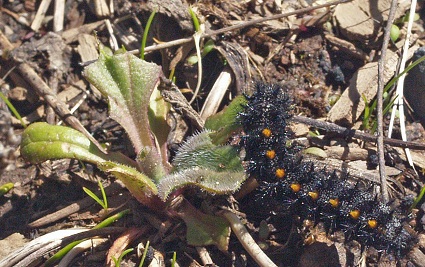
Note the black tufts of hair on the Taylor's checkerspot caterpillar, and the single row of reddish-orange dots.
Silver-spotted tiger moth
Silver-spotted tiger moth caterpillars
- Are large
- Actively feed between the early spring and early June
- Primarily feed on conifers (evergreens)
- Do not have any spots
- Have yellow hairs
- Produce dense webs on trees
- Often feed in groups
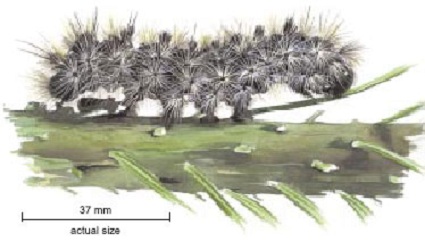
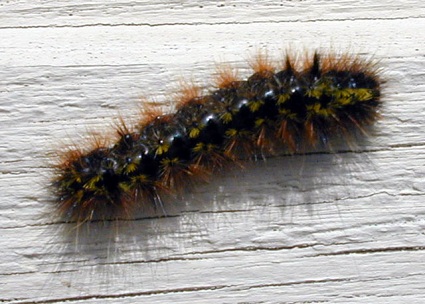
Note the yellowish tufts on the silver-spotted tiger moth caterpillars. Also, they do not have distinctive, coloured dots.
Tussock Moth
Tussock moth caterpillars
- Are hairy, with pencil-like tufts on the head and tail and "tussocks", or bunches of hairs, on the back
- Feed on Douglas-fir (Douglas-fir tussock moth) or both hardwood and evergreen trees (rusty tussock moth)
- Produce webbing, but not tents, on the trees they feed on
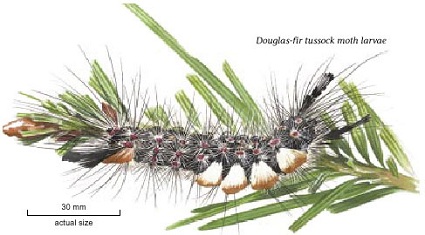
Note the two long tufts on the Douglas-fir tussock moth caterpillar's head, and the long bundles of hair on the body.
Tent caterpillar (Western and Northern)
Tent caterpillars:
- Usually feed in large groups
- Build large white tents of webbing
- Feed on the leaves of trees like Garry oak and alder, and fruit trees and ornamental shrubs
- Have short hairs on their bodies
- Have blue, orange or red spots
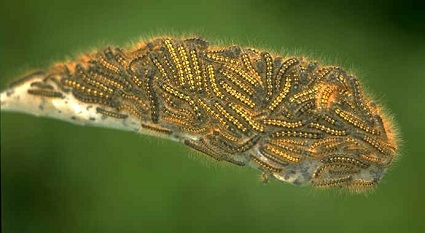
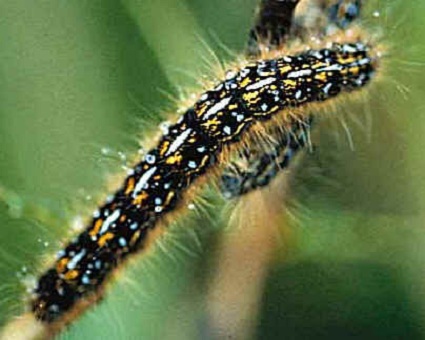
Note the masses of tent caterpillars gathered on a tent of webbing. Note also the shorter hairs on the body, and the white and yellow markings on the back.
Winter moth
Winter moth caterpillars:
- Are hairless and green
- Are found hiding within rolled leaves
- Feed on large, leafy trees like maple, oak and alder, and on fruit trees and ornamental shrubs
- Suspend themselves from a single strand of webbing
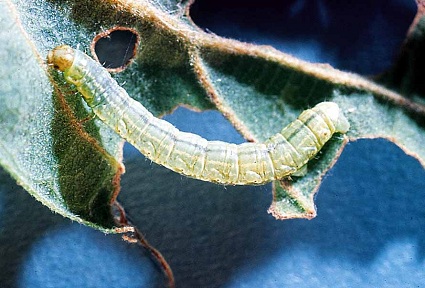
Note that the winter moth is green and hairless.
Field guide to forest damage
Contact information
Contact us if you have further questions about the spongy moth or how the species is controlled in B.C.
